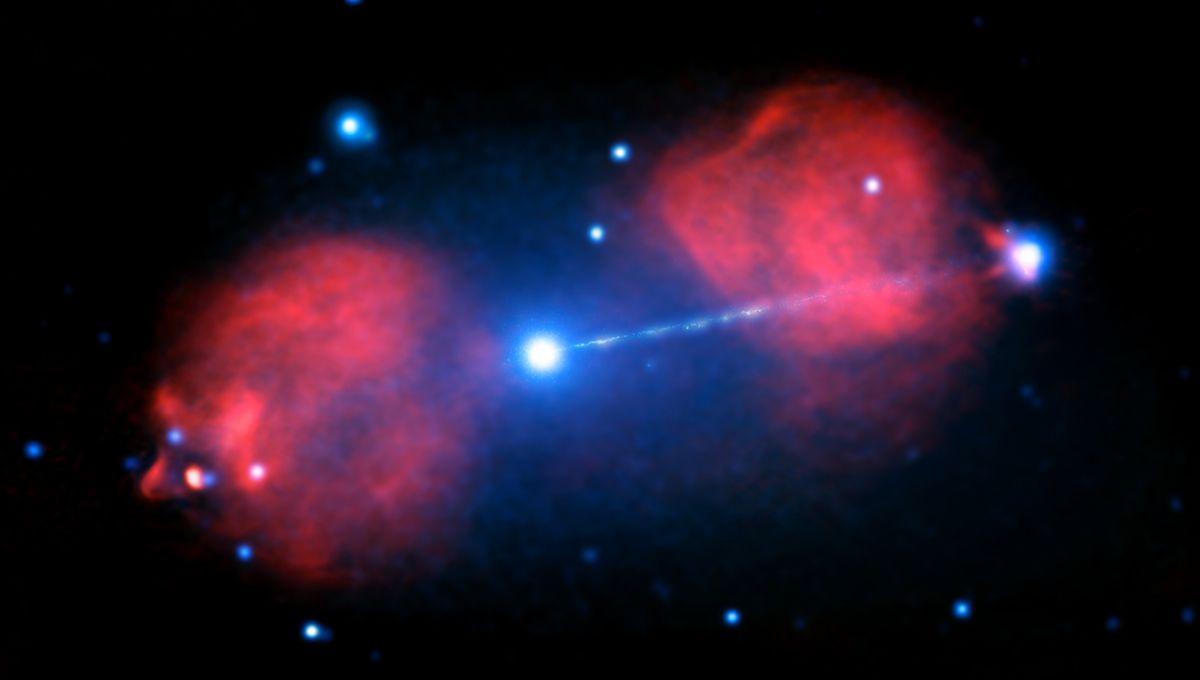
Astrophysical jets are common in many celestial bodies, but they don’t get more spectacular than those produced by supermassive black holes. Particles from around a black hole are accelerated to almost the speed of light, creating structures often extending up to millions of light-years. We are not certain how these structures form – and now, a challenge to our leading model has appeared.
The current idea is that these jets are accelerated near the supermassive black hole, and remain stable as they stretch far away from the center of the galaxy. The accelerated charged particles, mostly electrons, release X-rays. The stability of X-ray emissions has been seen as evidence of the stability of the jets, but new research claims that they are not as stable as previously thought.
The team looked at almost all the jets seen by NASA’s Chandra X-ray observatory more than once. The final sample was 53 jets and around 155 unique regions within them. What they found was a surprising variability, in just a matter of years. This is not something expected for a system that should be stable for millions of years.
X-ray observations are often based on a number of photons that can be counted on one hand. The work required strong statistical analysis to avoid counting randomness as a signal of variability. Lead author Eileen Meyer, an astronomer at the University of Maryland, Baltimore County, worked with statisticians at the University of Toronto and Imperial College London to work out the real variability. They are confident that between 30 and 100 percent of the jets change in the short term.
“Pulling this result out of the data was almost like a miracle, because the observations were not designed to detect it,” Meyer explained in a statement. “While we would like better constraints, the variability is notably not zero.”
The work suggests that particles might not just be accelerated near the black hole, but also along the jet. The study also suggests that older jets are more stable, probably due to differences in how the universe was back then. The work challenges how X-ray production in jets is supposed to take place.
“Hopefully this will be a real call to the theorists,” Meyer added, “to basically take a look at this result and come up with jet models that are consistent with what we’re finding.”
The findings are reported in Nature Astronomy.
Source Link: Variations In Black Hole Jets Challenge Leading Theory Of How They Form